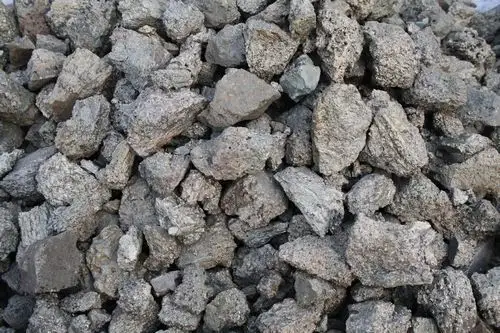The production of ferrophosphorus primarily involves the high-temperature carbon reduction of apatite, with the addition of silica to generate calcium silicate. Steel scraps are introduced to restore the original apatite, and the addition of steel scraps and reduced phosphorus results in the formation of ferrophosphorus. This intricate process lays the foundation for the preparation of ferrophosphorus.

Applications of Ferrophosphorus:
Ferrophosphorus plays a pivotal role in the industry, particularly in the manufacturing process of brake shoes for trains. These shoes contain 0.7% to 1.0% phosphorus, forming a uniform binary phosphorus eutectic structure in castings that is distributed in a network pattern. This phosphorus eutectic structure enhances not only wear resistance but also significantly improves thermal conductivity and heat resistance, ensuring a more even wear surface and reducing the likelihood of sparking during friction. Additionally, the ultrafine powder of 20% ferrophosphorus can substitute for ultrafine zinc powder as a coating, and ferrophosphorus itself is utilized in radiation protection.
Reasons for Ferrophosphorus Powder Replacing Zinc Powder:
Ferrophosphorus can effectively replace zinc powder, primarily due to the relatively high cost of zinc as a corrosion-resistant material. By substituting ferrophosphorus for zinc powder, not only can smelting costs be reduced, but the anti-corrosion performance can also match that of zinc powder. However, many manufacturers still harbor some doubts about the effectiveness of ferrophosphorus replacing zinc powder.
Mechanism of Ferrophosphorus’s Corrosion Protection Effect:
The ability of ferrophosphorus to replace zinc powder and provide good corrosion protection lies in its cathodic protection characteristics. In practical smelting, ferrophosphorus can form a conductive path, and react with the primary air corrosion medium, thereby imparting a certain degree of corrosion resistance to the smelted steel.
Synergistic Benefits of Ferrophosphorus and Zinc Powder Combination:
The combination of ferrophosphorus and zinc powder is not only applicable in the smelting process but also significantly enhances the utilization rate of zinc powder in smelting, effectively saving smelting costs. The effectiveness of phosphorus iron replacing zinc powder generally ranges from 20% to 50%, and this value is not fixed but depends on the operational quantity, product requirements, and other factors.
In summary, ferrophosphorus demonstrates a wide range of applications in industrial manufacturing, especially in replacing zinc powder for corrosion resistance. Its advantages lie not only in cost reduction but also in improving smelting efficiency and corrosion resistance. However, more manufacturers need to deepen their understanding of the properties and application mechanisms of ferrophosphorus to fully exploit its potential value. Through further research and practical application, we can anticipate a more extensive and profound utilization of ferrophosphorus in the industrial sector.
